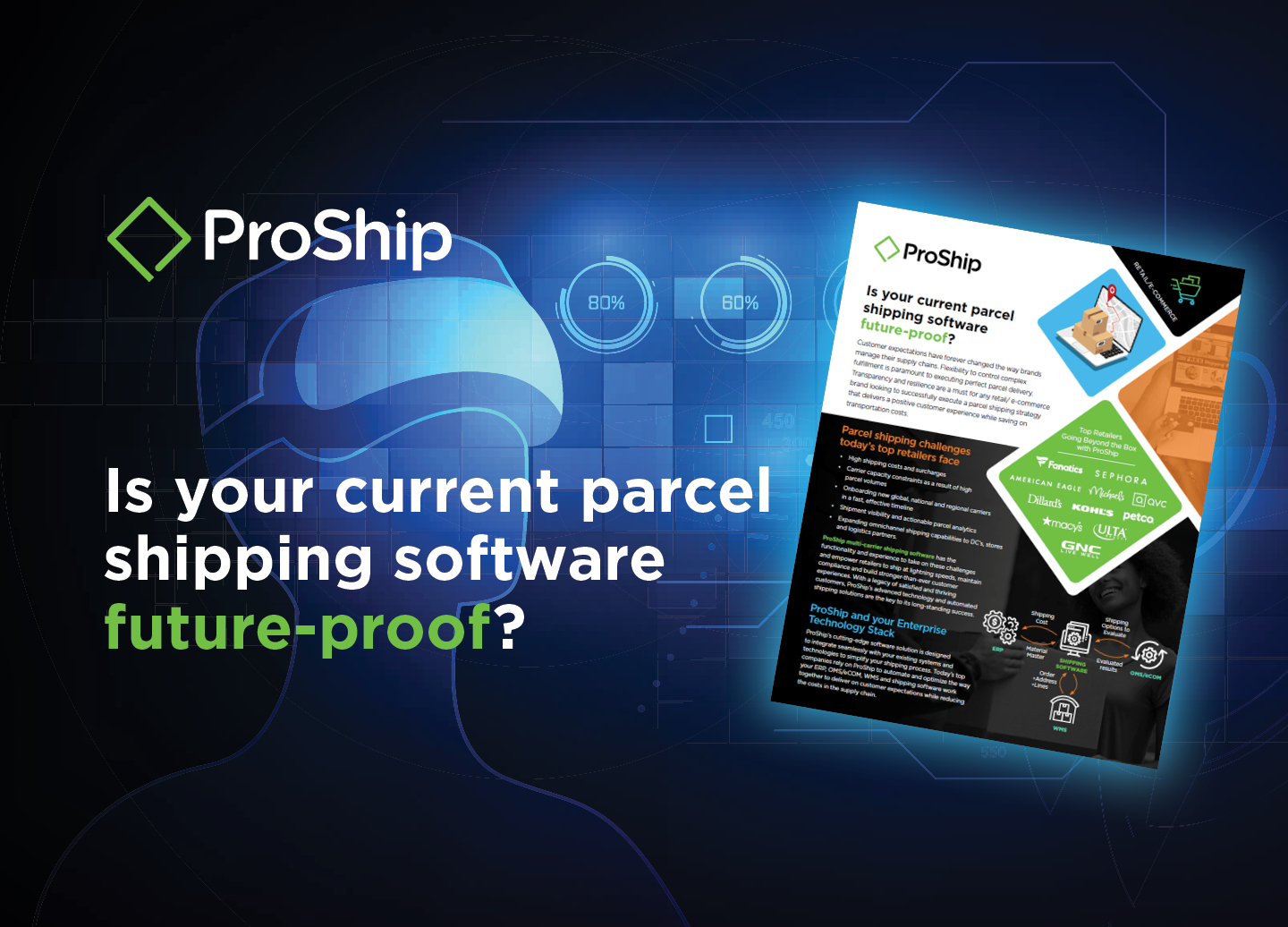Dive in to explore the challenges of selecting the wrong solution and what to look for in the right parcel shipping software.
One thing that the pandemic taught us is that the supply chain makes the world go round. Without it, we are up a creek without a paddle. We are no longer in the midst of experiencing the critical supply chain disruptions of 2020-2021. However, shipping still plays a critical role in the success of top brands around the world.
To deliver a positive Customer Experience (CX), many businesses turn to multi-carrier shipping software (MCSS). These shipping software solutions promise streamlined operations, increased efficiency, enhanced revenue streams, and improved customer satisfaction. However, the unfortunate reality is that not all multi-carrier shipping solutions live up to their promises. Dive in to explore the challenges of selecting the wrong solution, how it can impact your business, and the steps to take when faced with this challenging situation.
What Went Wrong: Identifying the Issues
When a shipping solution fails to meet expectations, several tell-tale signs start to appear. Here are some of the key indicators that signal a multi-carrier shipping software may not be working as expected or even meeting your needs.
- Delivery delays and missed deadlines: One of the most apparent signs of a problematic shipping solution is an increase in delivery time delays and missed deadlines. If your customers are consistently receiving their orders later than expected or shipments are arriving after promised dates, it’s a clear indicator that the shipping software is not functioning efficiently.
- Frequent errors in shipping labels: Errors in shipping labels can create a chain reaction of problems, leading to packages being misrouted or returned to the sender. Common problems include incorrect addresses, missing information, or formatting issues. These mistakes can not only delay deliveries, but also result in additional costs to correct the errors.
- Difficulty in Managing Carrier Integrations: Shipping software is meant to simplify the process of working with multiple carriers with their broad library of carrier integrations. However, when a solution struggles to handle carrier integrations effectively, it leads to confusion, ineffectiveness, and increased manual work. Brands may find themselves grappling with separate platforms, logins, and interfaces for different carriers. This ultimately undermines the intended purpose of using a multi-carrier shipping solution.
- Limited Carrier Options: Speaking of carrier integrations, an elite shipping solution will offer a wide range of carrier and service options. These options provide customers with the flexibility to choose the most cost effective and time-efficient shipping methods. If those integrations aren’t there, it can lead to higher overall shipping costs and a lack of carrier diversity when supply chain disruptions come up.
- Lack of Scalability for Growth: As businesses grow and shipper expectations evolve, their shipping needs evolve. A multi-carrier shipping software without scalability may not be able to accommodate increasing order volumes or handle new complex shipping requirements. If the shipping solution cannot keep up with your needs, it can lead to several consequences. Supply chain bottlenecks, operational inefficiencies, and potential limitations can arise if you are considering growing to a new market.
Researching and Choosing a New Multi-Carrier Shipping Solution
Selecting a new shipping software requires careful consideration and thorough research to avoid ending up with a solution that repeats past mistakes. With this systematic approach, businesses can increase the likelihood of finding a long-term solution that aligns with their shipping needs and operational goals.
- Define Your Shipping Requirements: Start by outlining your shipping requirements and challenges. Consider things like the volume of shipments, delivery service destinations (urban, rural, central to one coast, etc.), the variety of products shipped, and any special shipping services needed. Putting together a comprehensive list will help set a foundation for evaluating solutions later.
- Do Your Research: Reach out to industry peers, partners, and scour the internet to gather recommendations for leading multi-carrier shipping solutions. Additionally, look for online reviews and testimonials to gain insights into the experiences of other brands – if you can get a reference, even better! Look for recent news on each to understand their reliability and dependability. You want to avoid a future sunset – a worst case scenario!
- Scalability and Flexibility: Ensure that the new shipping solution is scalable and flexible. It should accommodate changes influenced by external factors, like political, weather, or customer expectations, as well as internal factors such as business growth, expansion, or new product launches. Consider how easily the shipping software can adapt to increased order volumes, incorporate new carries, and any additional shipping features (what is on their roadmap?) as your business expands.
- Carrier Integrations and Coverage: Assess the number of carrier integrations the shipping software offers. Does it include the carriers you work with or plan to work with in the future? A diverse range of carrier options ensures you can effectively manage shipping spend while meeting customer service delivery expectations for different types of shipments.
- Transparent Pricing: Carefully evaluate the pricing structure of each multi-carrier shipping software to ensure it aligns with your budget and to understand the Return on Investment. Understand that some solutions have hidden costs or complex pricing models that can lead to unexpected expenses in the long run.
- Integration with the Enterprise Software Stack: Seamless integration between the shipping solution and other parts of the Enterprise Software Stack (ESS) enhances operational efficiency, data accuracy, and overall productivity. A cohesive ESS ensures smooth data flow between systems, minimizes manual data entry, and reduces the likelihood of errors. The ability to centralize information and automate processes across the entire software stack empowers your brand with real-time insights, better decision-making, and a unified simple source of truth for your operations.
While this isn’t a complete list, brands should make sure to highlight the features and requirements that are essential to their business operations.
Transitioning to the Industry-Leading Solution: ProShip Multi-Carrier Shipping Software
Choosing the wrong multi-carrier shipping solution can be a frustrating and costly experience. However, it also presents an opportunity to learn, grow, and make better choices moving forward. By taking the necessary steps to address the situation, reassessing your needs, and diligently selecting a new solution, you can transform this setback into a means for more efficient and successful shipping processes. Remember, the right multi-carrier shipping solution should be part of a long-term strategy and an investment that will pay off in the form of satisfied customers, increased revenue, and a thriving business.
Once you’ve found the solution of your dreams that meets all your needed criteria, the next step is the transition. The right MCSS will come equipped with robust tools and features to help smooth the transition. ProShip’s documented process helps answer all of these questions and provides a breakdown of the integration project phases so you know exactly what to expect and when.
To learn more about how ProShip can help transform your parcel shipping operations with speed, flexibility, compliance, and support, contact our shipping experts. They are ready to dive into your business to solve your complex parcel shipping problems. Reach out to schedule a demo or connect with us at one of our upcoming events to hear why top brands who ship parcel, trust ProShip.

 Back to Blog
Back to Blog






